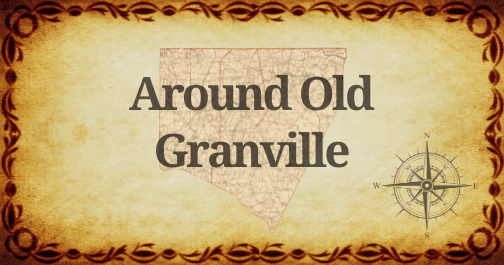If everyone who was born and raised in the Henderson area took a deep dive into their ancestry, how far back would they have to go to find out that they were related to the Hawkins family?
Even if your last name isn’t Hawkins, local historian Mark Pace said he predicts that up to 20 percent of folks whose families are from Vance County can trace their roots to Philemon Hawkins.
Pace and WIZS co-host Bill Harris discussed some of the notable figures who descended from Hawkins, who was born in England in 1690.
Between 1778 and 1848 there was a member of the Hawkins family in state government, Pace said.
“They were the family that developed the railroad that fundamentally changed the area,” he said on Thursday’s Around Old Granville segment of TownTalk.
What the Kennedys and Fitzgeralds were to Boston and DuPont to Delaware, the Hawkins family was to this area, Pace said.
Hawkins and his wife first settled in Gloucester County, VA, then in 1735 he moved his family and second wife (his first wife died) to what is now Warren County, NC. With him he brought two millstones and not much else and set up a grist mill in what had to be considered the frontier.
Anyone looking into the history of the area should really take a close look at this family, Pace said. “You’ll go far…by studying the Hawkins family,” whose wealth and influence was unsurpassed at the time.
By the time Bute County was founded in 1763, Hawkins had amassed more than 7,000 acres of land and had more than 100 slaves. Bute County was formed from old Granville County, and in 1779 split again into what are now Warren and Franklin counties.
Hawkins had four sons, who were influential in their own right. One was Benjamin Hawkins, who was the first senator from North Carolina. He went to Princeton and later worked on the staff of Gen. George Washington. He spoke French, and was an interpreter when Washington sought the help of Lafayette and Rochambeau in the Revolutionary War.
One of Hawkins’s grandsons, Philemon Hawkins III was born in 1752. He married Lucy Davis and they lived at Pleasant Hill in Middleburg. Today it’s called Rivenoak and it still stands as one of the best examples of antebellum architecture in the area.
In 1829, Hawkins and wife held a big family reunion, to which more than 131 direct descendants attended.
Hawkins died in 1833 and is buried at Rivenoak.
But this Hawkins also had several children who were successful in life. His three sons – John Davis Hawkins, future NC governor William and Dr. Joseph Warren Hawkins – married sisters, daughters of Alexander Boyd, who founded Boydton, VA.
“It was a real power marriage,” Pace said.
Besides the future governor, Joseph reportedly established the first medical school in North Carolina and John Davis (1781 – 1853) “was a mover and shaker of the second railroad in North Carolina,” Pace said.
But it was their sister who got the train out of the station, as it were. She had married into the Polk family of Raleigh and had the idea to build a wooden track from a stone quarry in this area all the way to Raleigh, where workers were busy rebuilding the State Capitol, which had burned in June 1831.
Her brother John Davis took that idea and, with $750,000 of his own money, set about bringing the railroad to the area.
The towns of Littleton, Henderson, Kittrell, Youngsville and Franklinton have this member of the Hawkins family to thank, Pace said, because “none existed before the railroad.”
CLICK PLAY!
